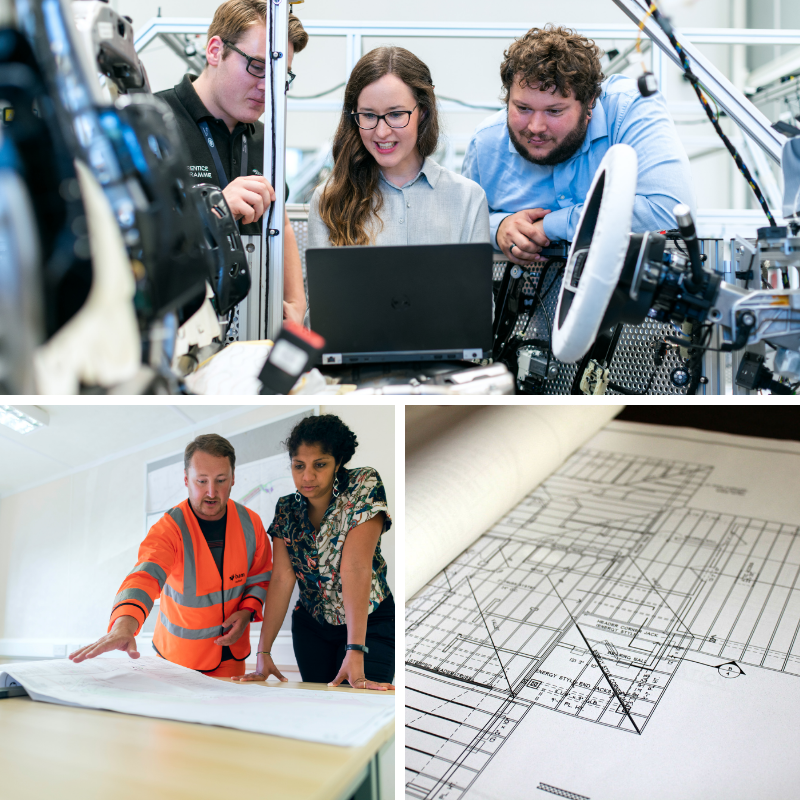One of the most miscellaneous and versatile engineering fields, mechanical engineering is the study of objects and systems in motion. That being said, the field of mechanical engineering touches virtually on every aspect of modern life, including the human body.
The role of a mechanical engineer is to take a product from an idea to the market. To achieve this, the mechanical engineer must be able to determine the forces and thermal environment that the product, its parts, or its sub-systems will experience. They are to design them for functionality, aesthetics, and durability. Mechanical engineers also have to determine the best manufacturing approach that will ensure operation without catastrophe.
Mechanical engineers play important roles in a wide range of industries including the following:
- Automotive
- Aerospace
- Biotechnology
- Computers
- Electronics
- Microelectromechanical systems
- Energy conversion
- Robotics and automation
- Manufacturing
The American Society of Mechanical Engineers (ASME) currently lists up to 36 different technical divisions, from advanced energy systems and aerospace engineering to solid-waste engineering and textile engineering.
The breadth of mechanical engineering chastisement allows students a variety of career choices beyond the industries listed above. Regardless of the precise path, they envisage for themselves, a mechanical engineering education authorizes students with creative thinking skills to design an exciting product or system; analytical tools to attain their design goals; the ability to overcome all restrictions; and the teamwork needed to design, market, and yield a system. These valuable skills can be used to launch careers in many other fields, such as medicine, law, consulting, management, banking, and finance.
What Exactly is Mechanical Engineering?

Technically, mechanical engineering is the application of the principles and problem-solving techniques from design to manufacturing to the marketplace for any object. Mechanical engineers assess their work using the principles of motion, energy, and force, making sure that designs function safely, efficiently, and reliably, all at a competitive cost.
Mechanical engineers do make a difference. That’s because of mechanical engineering careers centre around creating technologies to meet your everyday human needs. Virtually every product or service in modern society has probably been touched in some way by a mechanical engineer to help us. This includes solving today’s problems and creating future resolutions in health care, energy, transportation, space exploration, climate change, and more.
Being deep-seated in many challenges and innovations across many fields means a mechanical engineering education is versatile. To meet this broad request, mechanical engineers may design a module, a machine, a system, or a process. This ranges from the macro to the micro, from the largest systems like cars and satellites to the smallest components like sensors and switches. Anything that requires to be manufactured – anything with moving parts – needs the knowledge of a mechanical engineer.
What Do They Do?
Mechanical engineering syndicates creativity, knowledge and analytical tools to complete the difficult task in shaping an idea into realism. This alteration happens at the personal scale, affecting human lives on a level we can reach out and touch like robotic prosthetic devices. It happens on the resident scale, affecting people in community-level spaces, like with nimble unified microgrids. And it happens on much larger scales, like with advanced power systems, through engineering that operates nationwide or across the planet.
Mechanical engineers have a massive range of opportunity and their education reflects this breadth of subjects. Students concentrate on one area while consolidating analytical and problem-solving skills applicable to any engineering situation.
Disciplines within mechanical engineering include the following:
- Acoustics
- Aerospace
- Automation
- Automotive
- Autonomous Systems
- Biotechnology
- Composites
- Computer-Aided Design (CAD)
- Control Systems
- Cybersecurity
- Design
- Energy
- Ergonomics
- Human health
- Manufacturing and additive manufacturing
- Mechanics
- Nanotechnology
- Production planning
- Robotics
- Structural analysis
Technology itself has also shaped how mechanical engineers’ function and the suite of tools have grown quite powerful in recent years. Computer-aided engineering (CAE) is a broad term that covers anything from typical CAD methods to computer-aided manufacturing to computer-aided engineering, involving limited element analysis (FEA) and computational fluid dynamics (CFD). These tools and others have additionally broadened the horizons of mechanical engineering.
A Career in Mechanical Engineering

Society pretty much depends on mechanical engineering. The need for this knowledge is great in so many fields and there is no real limit for the freshly graduated mechanical engineer. Jobs are often in demand, particularly in the automotive, aerospace, electronics, biotechnology, and energy businesses.
In statics, research focuses on how forces are spread to and throughout a structure. As soon a system is in motion, mechanical engineers look at subtleties, or what speeds, accelerations and resulting forces come into play. Kinematics then scrutinizes how a mechanism behaves as it moves through its range of movement.
Resources science delves into defining the best materials for different usages. A part of that is its strength, which is indispensable for many construction, automobile, and medical materials.
How energy gets transformed into useful power is the heart of thermodynamics, as well as determining what energy is lost in the procedure. One specific kind of energy, heat transfer, is crucial in many usages and need gathering and analysing temperature data and deliveries. Fluid mechanics, which also has a diversity of applications, look at many properties including pressure reduction from fluid flow and aerodynamic drag forces.
Manufacturing is an imperative step in mechanical engineering. Within the field, researchers examine the best processes to make manufacturing more effectual. Laboratory methods focus on refining how to measure both thermal and mechanical engineering products and processes. At the same time, machine design grows equipment-scale processes while electrical engineering focuses on circuitry. All this equipment provides vibrations, another field of mechanical engineering, in which researchers find out how to predict and control vibrations.
Engineering economics makes mechanical designs pertinent and usable in the real world by guesstimating manufacturing and life cycle costs of materials, designs, and other engineered products.
Skills Needed

The core of engineering is problem-solving. With this at its core, mechanical engineering also needs applied creativity – a hands-on understanding of the work involved. All that along with strong interpersonal skills like networking, leadership, and conflict organization. Creating a product is only part of the calculation; knowing how to work with people, ideas, data, and economics completely make a mechanical engineer.
Conclusion
Breakthroughs in materials and analytical tools have made way for new frontiers for mechanical engineers. Nanotechnology, biotechnology, amalgams, computational fluid dynamics (CFD), and acoustic engineering have all extended the mechanical engineering toolbox.
Nanotechnology allows for the engineering of materials on the tiniest of scales. With the ability to design and manufacture down to the rudimentary level, the likelihoods for objects grows immensely. Composites are another area where the operation of materials allows for new manufacturing opportunities. By uniting materials with different characteristics in ground-breaking ways, the best of each material can be employed and new answers found.
CFD provides mechanical engineers with the opportunity to study multifaceted fluid flows analysed with procedures. This allows for the modelling of circumstances that would previously have been impossible. Acoustical engineering inspects vibration and sound, providing the opportunity to decrease noise in devices and increase competence in everything from biotechnology to architecture.
Articles That May Interest You
Civil Engineering Services in Miri
